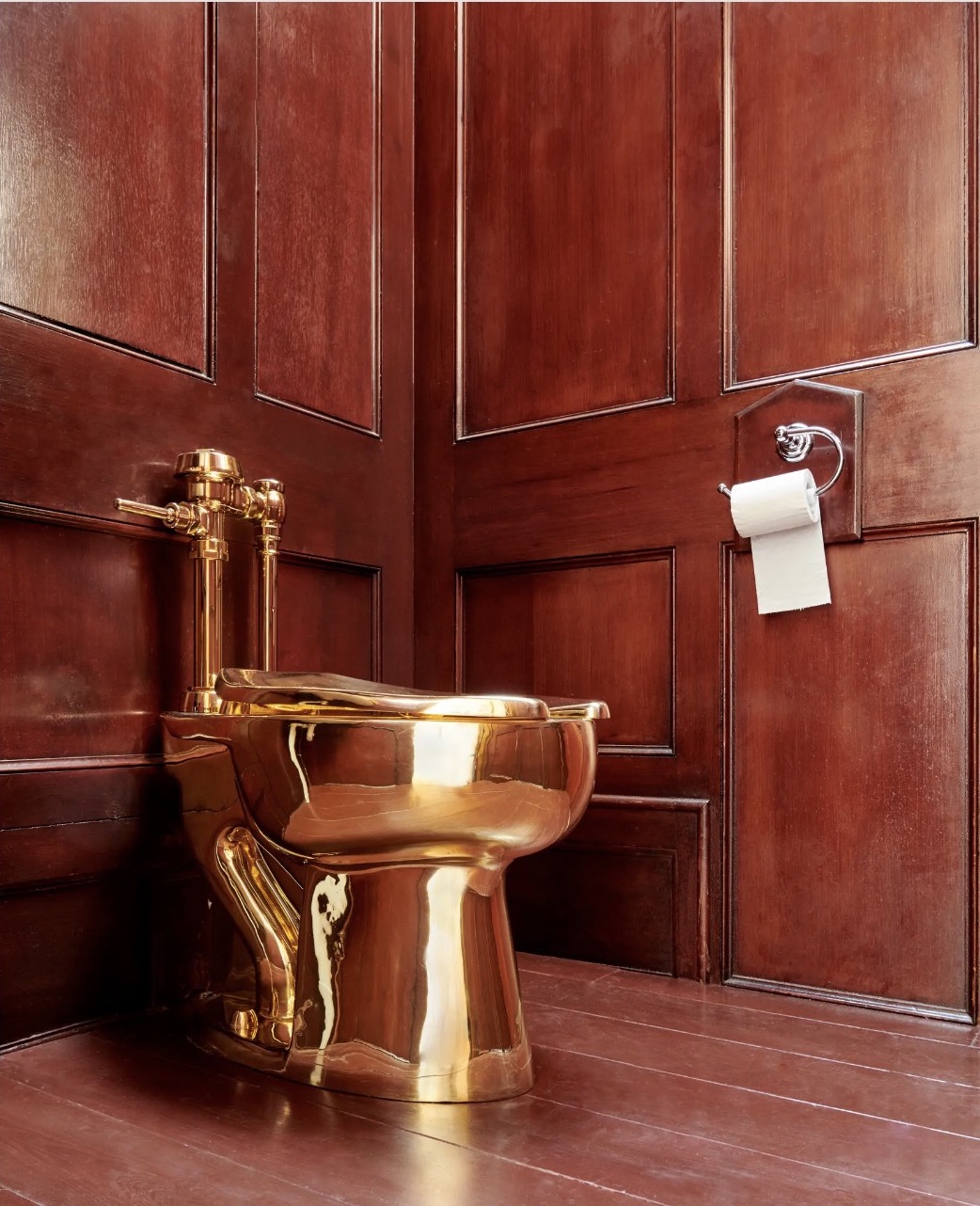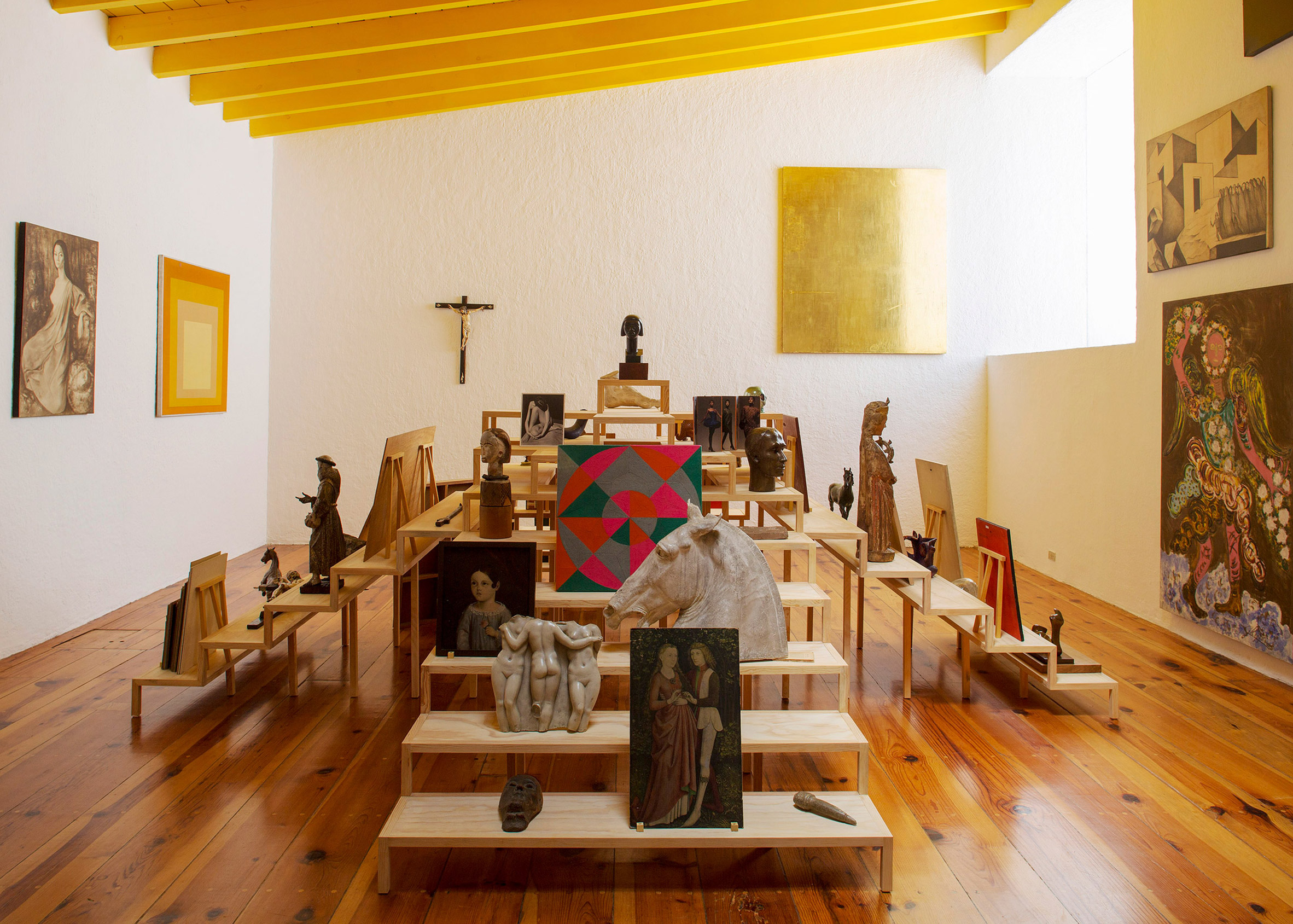Tarahi IV
2012 - Film & Video (Film & Video)
7’36’’min
Haris Epaminonda
Haris Epaminonda’s work questions the manipulation and the flow of images as well as their power of fascination. The images she works with to create her collages (paper or video) come from magazines or history books, film extracts or soap operas from the 1960s and 1970s. By readapting a universal past (in her work on monuments) as well as personal (with tv series she used to watch as a child, etc.) Haris Epaminonda questions the creation and the assertion of an identity in a particular cultural context and in a currently divided country. Created from extracts of kitsch movies or Greek soap operas from the 1960s, these videos are like audiovisual ‘postcards’ reflecting a nostalgic and melancholic approach. The images have lost their context and original meaning to then be re-assembled, confronted to each other and superimposed with other elements, to reveal new sequences. The narration has disappeared from the sequences and the spectator waits in vain for something to happen. In “Tarahi V”, the saturated colors of the sequences collected from 1960 films seem to give a new life to the characters (the little girl in pink with her doll, the couple walking backwards, etc.) while the fireworks, superimposed throughout the film provide a disenchanting aspect to the whole scene. Recalling Hitchcock as well as René Magritte, “Tarahi V” presents a pending moment providing the shots and the characters with ghostly appearances. This feeling is reinforced by the piano arrangement creating tension throughout the whole sequence. The lighting, the colors and the particular rhythm of Haris Epaminonda’s films provide a strong radiant power. They are like traces of a fictionalized past permanently stuck in one’s memory. Haris Epaminonda’s films and collages belong to a fragmented art that questions the “in between”, a shifting moment leading to a new spatial and time-related sphere.
Epaminonda’s video works are based on re-shot excerpts of film and television footage – principally the Greek soap operas and kitsch romantic films fromthe 1960s that used to fill up Sunday afternoons in the artist’s Cypriot childhood –which she then subtly reworks. Sometimes local celebrities appear in her films, but, in contrast to the early works of Francesco Vezzoli or T.J. Wilcox, they don’t do so in order to emphasize a phantasmal communion with their constructed identities. The scenes that she chooses to work with are not instantly recognizable from the original narrative, so the culled images are effectively stripped of their initial meaning and context. These out-takes are then edited and adapted in a variety of ways: the film’s speed and direction are changed, sections are distorted, its colour is intensified, or a poignant soundtrack is added. Most significantly, she also superimposes footage to make surreal composites: an indoor scene, say, might also have traces of fireworks glimmering through it. While these are all common manipulation techniques of digital video, Epaminonda uses them with captivating sensibility. Extract by Dominic Eichler (Frieze 111). Haris Epaminonda was born in Cyprus in 1980. She lives and works in Berlin, Germany.
Colors:
Related works sharing similar palette

© » KQED
Inquiring Minds Want to Know: ‘How Does Santa Go Down the Chimney?’ | KQED Skip to Nav Skip to Main Skip to Footer The Do List Inquiring Minds Want to Know: ‘How Does Santa Go Down the Chimney?’ Listen Samantha Balaban Dec 4 Save Article Save Article Failed to save article Please try again Facebook Share-FB Twitter Share-Twitter Email Share-Email Copy Link Copy Link ‘How Does Santa Go Down the Chimney?’ (Text © 2023 by Mac Barnett...

© » KADIST
Venzha Christ
2011The installation work Men from Hyperion and Women from Phoebe (2011), for examples, features six guitars mounted on steel crossbar stands and connected to one another with slack wires...

© » MODERN MET PHOTOGRAPHY
Action-Packed Winners of the 2023 Red Bull Illume Awards Home / Photography / Photo Contest Action-Packed Winners of the 2023 Red Bull Illume Image Quest By Jessica Stewart on December 5, 2023 Overall Winner & Winner, Innovation by MPB, Photographer: © Krystle Wright / Red Bull Illume, Athlete: Angela VanWiemeersch, Location: Long Canyon, UT, United States “Turns out by slowing down life and embracing boredom again into my life, my dreams have come back that ignite new passion projects...

© » KADIST
Friday, January 31st, 2014, at 7 p.m Discussion between Arseniy Zhilyaev and Keti Chukhrov and projection Philosopher and poet, Keti Chukhrov will present her film Love Machines that questions today’s shift to a post-humanist philosophy, with its dismissal of the notions of love, mercy, pity, and collective sensitivity as components of an outdated human culture...

© » KADIST
Amor Muñoz
2014Yuca_tech: Energy by Hand is an installation by Amor Muñoz that resulted from a local technology lab in a small village in the Yucatán henequen zone, in the Mayan region of Mexico...

© » LITHUB
Benjamin Moser on What We Can Learn from Failed Dutch Painters ‹ Literary Hub Craft and Criticism Fiction and Poetry News and Culture Lit Hub Radio Reading Lists Book Marks CrimeReads About Log In Literary Hub Craft and Criticism Literary Criticism Craft and Advice In Conversation On Translation Fiction and Poetry Short Story From the Novel Poem News and Culture The Virtual Book Channel Film and TV Music Art and Photography Food Travel Style Design Science Technology History Biography Memoir Bookstores and Libraries Freeman’s Sports The Hub Lit Hub Radio Behind the Mic Beyond the Page The Cosmic Library Emergence Magazine Fiction/Non/Fiction First Draft: A Dialogue on Writing Just the Right Book Keen On Literary Disco The Literary Life with Mitchell Kaplan The Maris Review New Books Network Open Form Otherppl with Brad Listi So Many Damn Books Thresholds Tor Presents: Voyage Into Genre Windham-Campbell Prizes Podcast WMFA Reading Lists The Best of the Decade Book Marks Best Reviewed Books BookMarks Daily Giveaway CrimeReads True Crime The Daily Thrill CrimeReads Daily Giveaway Log In Via Liveright Benjamin Moser on What We Can Learn from Failed Dutch Painters "Why do we make art, why do we need it, and how can you avoid becoming a failure?" By Benjamin Moser November 20, 2023 When I was 25, I moved to the Netherlands from London...

© » KADIST
Amol k Patil
2012The title of the performance video work Impression by Amol k Patil refers to an Indian tradition...

© » ARTS EQUATOR
Weekly Southeast Asia Radar: RPG goes SEA with crocodile; A decade of Filipino art | ArtsEquator Thinking and Talking about Arts and Culture in Southeast Asia ArtsEquator Radar JL JAVIER December 28, 2019 ArtsEquator’s Southeast Asia Radar features articles and posts about arts and culture in Southeast Asia, drawn from local and regional websites and publications – aggregated content from outside sources, so we are exposed to a multitude of voices in the region...

© » ARTS EQUATOR
Yale-NUS closure: Artistic legacies and loss in (de)liberation | ArtsEquator Thinking and Talking about Arts and Culture in Southeast Asia ArtsEquator Viewpoints Raphael Hugh October 6, 2021 By Clara Che Wei Peh and Tee Zhuo (2,500 words, 10-minute read) In August, the National University of Singapore (NUS) announced unilaterally that Yale-NUS College would be shut down by 2025, marking what many see as a premature end to the partnership between Yale University and NUS that started in 2011...

© » HYPERALLERGIC
Yuan Goang-Ming to Represent Taiwan at the 60th Venice Biennale With “Everyday War” Skip to content Yuan Goang-Ming, “Everyday War” (expected in 2024), still frame from video (© Yuan Goang-Ming, image courtesy the artist) The Taipei Fine Arts Museum (TFAM) , artist Yuan Goang-Ming, and curator Abby Chen are pleased to announce Everyday War , the exhibition representing Taiwan at the 60th Venice Biennale in 2024...

© » ARTS EQUATOR
Fragments of History: Loc Vang, the Yellow music singer from Hanoi | ArtsEquator Thinking and Talking about Arts and Culture in Southeast Asia ArtsEquator Viewpoints Nguyen Dinh Toan August 3, 2021 By Duong Nguyen Thuy (800 words, 3-minute read) It was perhaps the melancholy of history that was the most palpable presence in the livestream action Fragments of History , which I organised as part of Mekong Cultural Hub’s Mini-Meeting Point held on 17 July 2021...









